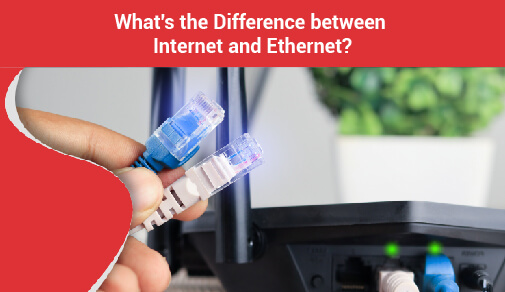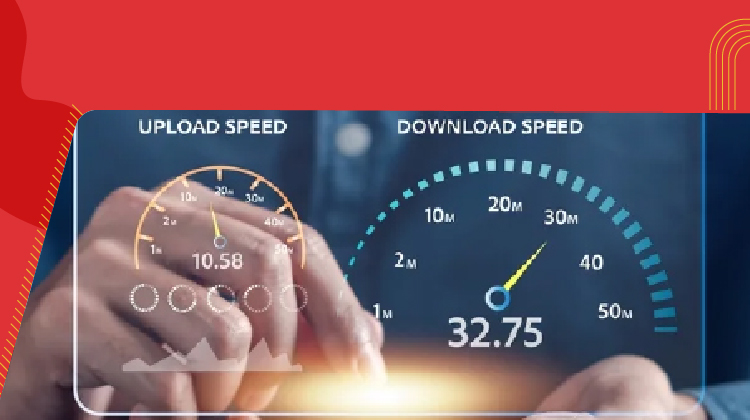What's the difference between internet and Ethernet?
Friday, Sep 06, 2024 · 6 minutes


GENERIC
Friday, Sep 06, 2024 · 6 minutes
Two crucial components of modern networking are Ethernet and the Internet. Ethernet refers to a set of wired networking technologies used to establish local area networks (LANs) in confined spaces such as homes or offices, using cables to transmit data between devices. On the other hand, the Internet connects millions of commercial, academic, government, and private networks globally.
By employing various technologies, including Ethernet for local connections, the Internet enables communication and access to information over long distances. Understanding these distinctions is essential for effectively managing and improving connectivity in both local and global contexts. Let's find out what is Internet, what is Ethernet and what is the difference between Internet and Ethernet.
The Internet is a global infrastructure that connects billions of devices worldwide with its network of networks, servers, routers, and data centers. It promotes worldwide connectedness by facilitating communication and information sharing among various protocols and technologies. This enormous system can handle a wide range of functions, from web browsing and email to video streaming and cloud computing. Its decentralized and interoperable design powers modern communication and cooperation worldwide by enabling smooth data transfer between various devices and networks. Effectively navigating the digital realm and utilizing its potential requires an understanding of its architecture and functioning.
Ethernet is primarily used in local area networks (LANs) to facilitate data transmission over wired connections within confined spaces such as offices or homes. It operates at the physical and data link layers of the networking stack, specifying methods for sending data packets between devices and standards for hardware components like cables and network interface cards (NICs).
By defining how devices interact, manage collisions, and access shared resources on the same network segment, Ethernet enables reliable and efficient communication. Due to its widespread use, it has become a crucial component of LANs, allowing for fast data transfer and connectivity between computers, printers, and other networked devices.
| Feature | Internet | Ethernet |
| Scope | A global network connecting millions of networks | Local network technology connecting devices in proximity |
| Connectivity | Wireless (Wi-Fi), wired (Ethernet), satellite, etc. | Wired (Ethernet), also Wi-Fi in some cases |
| Transmission Medium | Uses various protocols over diverse physical mediums | Uses Ethernet cables (e.g., Cat 5e, Cat 6) |
| Speed | Speeds can vary widely depending on the service provider | Typically faster than Internet speeds within local networks |
| Purpose | Enables global communication and access to resources | Facilitates communication between devices within a network |
| Protocol Stack | Operates at the network layer (TCP/IP model) | Operates at the data link layer (OSI model) |
As a global network, the Internet provides access to many services and information necessary for contemporary digital life. Users use it to access cloud storage and computing services, browse websites, send and receive emails, interact on social media, stream multimedia material, and play online games. Global communication, cooperation, and information sharing are made easier by this networked architecture. Applications for personal communications, corporate operations, education, entertainment, and more are supported by its adaptability.
In a localized context, like a building or campus, Ethernet is the core technology for local area networks (LANs), enabling dependable communication and data transmission between computers, printers, servers, and other networked devices. It outlines specifications for the actual hardware elements, such as network interface cards (NICs) and cables, as well as the protocols for managing collisions and packet transfer. The high-speed characteristics of Ethernet enable a variety of tasks, including resource access, file sharing, and networked internet applications and services. Its extensive use guarantees safe and effective data transfer in business environments, improving connectivity and productivity across networked devices in a scalable and smooth way.
Advantages:
Disadvantages:
Advantages:
Disadvantages:
Internet Security
1. Use strong passwords and enable two-factor authentication.
2. Install and regularly update antivirus and anti-malware software.
3. Use virtual private networks (VPNs) for secure remote access.
Ethernet Security
1. Secure network equipment and cables physically.
2. Implement network segmentation and access control lists (ACLs).
3. Regularly update firmware and software on network devices.
Ethernet and the Internet serve distinct yet crucial roles in networking. The Internet is a global infrastructure that connects billions of devices worldwide, enabling extensive data exchange and communication across various platforms. On the other hand, Ethernet operates within confined spaces such as local area networks (LANs), offering reliable data transfer over wired connections. Understanding these differences is key to optimizing network usage. Implementing security measures such as VPNs, antivirus software, and strong passwords ensures safe operations in both personal and professional settings. By learning the unique benefits of both Ethernet and Internet technologies and addressing security concerns, users can achieve efficient and secure digital communication. For an enhanced online experience, consider using an ACT internet connection, known for its high-speed and reliable service.
73

The New Social: How High-Speed Internet is Redefining 'Quality Time' with Friends and Family
Read more238

How ACT SmartWi-Fi is Redefining Home Internet in 2025: The Age of AI-Powered Seamless Connectivity
Read more114

From Bandwidth to Intelligence: How AI Is Redefining Business Demands from ISPs
Read more
A referral link has been sent to your friend.
Once your friend completes their installation, you'll receive a notification about a 25% discount on your next bill
![]() Please wait while we redirect you
Please wait while we redirect you

![]() One of our representatives will reach out to you shortly
One of our representatives will reach out to you shortly

One of our representatives will reach out to your shortly
![]() Please wait while we redirect you
Please wait while we redirect you

Please enter your registered phone number to proceed

Please enter correct OTP to proceed


Dear customer you are successfully subscribed
Please wait while we redirect you

Your ACT Shield subscription has been successfully deactivated

Dear user, Your account doesn't have an active subscription

Dear customer Entertainment pack is already activated.
Please wait while we redirect you